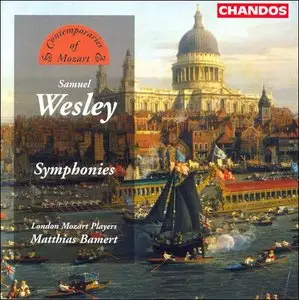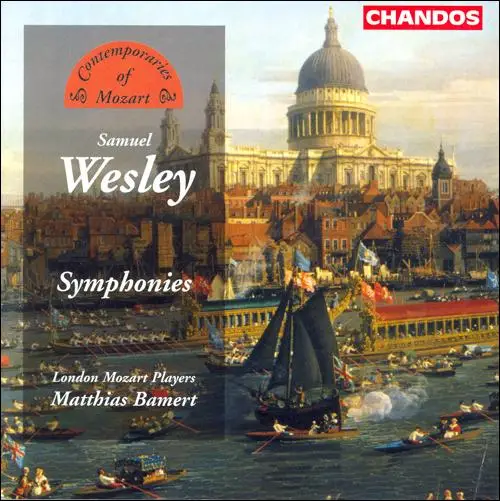Samuel Wesley (1766-1837) - Symphonies
DDD | mp3@320 | booklet/covers | 133 Mb | Rapidshare
Date CD: May 2000
DDD | mp3@320 | booklet/covers | 133 Mb | Rapidshare
Date CD: May 2000
This disc includes the premier recording of the Symphony in D major ‘Sinfonia obligato’ (1781). There is little competition for the other four symphonies.
This disc includes all of Wesley’s surviving symphonies (only two violin parts remain of his very first symphony), and as such presents an interesting survey of the development of his symphonic style.
This is the thirteenth disc in the revealing Contemporaries of Mozart series. The series has proved extremely successful and has uncovered a wealth of previously unrecorded eighteenth-century works.
Wesley’s instrumental compositions include a large body of music for organ and for piano, chamber music and works for orchestra, including a dozen concertos (for violin, harpsichord and organ), several overtures and six symphonies.
The earliest of the symphonies is dated 27 February 1781 and is described, ungrammatically, as ‘Sinfonia obligato’, for violin, cello and organ, with an orchestra of strings and two horns, with ad libitum timpani. The unusual, if not unique, (obbligato) group is used only in the outer movements but the technical demands on the three players, especially the violinist and cellist, are considerable.
The next three symphonies, chronologically, are all modestly scored for strings (with a discreet harpsichord continuo) and two horns. The Symphony in A major (1784 or after) begins with an extraordinary movement that vacillates between a gentle Andante that could belong to Mozart and a contrapuntal Allegro that could belong to Bach. The Symphony in D major (1784) has a lively and unusual first movement notable for its bold unisons and octaves separated by lyrical episodes of almost chamber-like delicacy. The Symphony in E flat major dated 25 April 1784 begins with a sonata-form Allegro that is exceptional, in Wesley’s symphonies, in its varied thematic material.
Wesley’s last symphony, in B flat major, is dated 27 April 1802 and is scored for strings and pairs of flutes, oboes, bassoons, horns and timpani. Its outer movements share the monothematic tendencies of the later Haydn, many of whose last dozen symphonies Wesley must have heard during Haydn’s sensational visits to London in 1791-2 and 1794-5. The crowning glory of this extraordinary work is a dynamic finale in Wesley’s unorthodox, monothematic brand of sonata form, full of counterpoint and arresting modulations.
Tracks:
Symphony in D major 'Sinfonia obligato' (1781)
Symphony in A major (1784)
Symphony in D major (1784)
Symphony in E flat major (1784)
Symphony in B flat major (1802)
download:
http://rapidshare.com/files/193598800/Wesley.part1.rar
http://rapidshare.com/files/193628104/Wesley.part2.rar
http://rapidshare.com/files/193598800/Wesley.part1.rar
http://rapidshare.com/files/193628104/Wesley.part2.rar
You want the 22 pages booklet? Send me a private message or leave a comment
also download:
Sammartini (1700-1775) - The late symphonies
English Classical Violin Concertos (includes one Wesley´s concerto)
Boccherini (1743-1805) - String Quintets Vol.1,4 & 5
Pietro Nardini (1722-1793) - Sonatas for Strings
please upload:
*discs from the collection: Contemporaries of Mozart
*Viotti - violin concertos (from dynamic)



